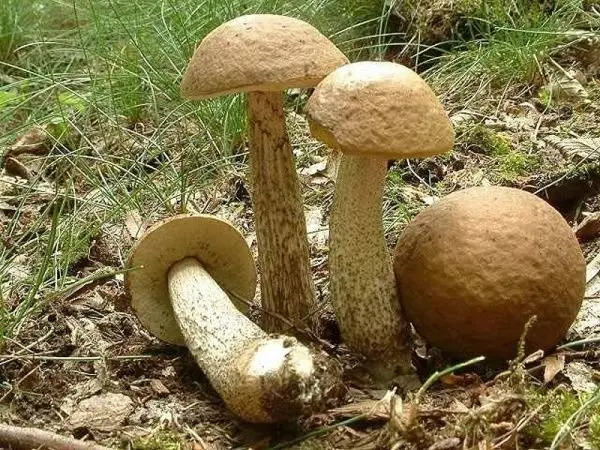Grappler (A pseudoscabrous bed)
- Division: Basidiomycota (Basidiomycetes)
- Subdivision: Agaricomycotina (Agaricomycetes)
- Class: Agaricomycetes (Agaricomycetes)
- Subclass: Agaricomycetidae (Agaricomycetes)
- Order: Boletales (Boletales)
- Family: Boletaceae (Boletaceae)
- Genus: Leccinellum (Lekcinellum)
- Type: Leccinellum pseudoscabrum (Грабовик)
- boletus gray
- Elm boletus
- Obabok gray

Hat: The diameter of the cap can reach 14 cm. The cap of a young mushroom has the shape of a hemisphere. The edges of the cap are turned up. Later, the cap becomes cushion-shaped. The surface of the cap is uneven, velvety, slightly wrinkled. The hat has an olive-brown or brown-gray color. In mature mushrooms, the skin may shrink, exposing the flesh of the cap and the porous layer.
Pulp: soft, fibrous flesh in the leg, white. Mature mushrooms have tough flesh. On the cut, the flesh acquires a pinkish-purple hue, then becomes gray and even later almost black. Pleasant in taste and smell.
porous layer: the thickness of the porous layer in the hornbeam (A pseudoscabrous bed) up to three cm. The layer is free with a notch at the base of the stem. The tubules are soft, slightly watery, narrow. Pores, angular-rounded, small. The surface of the pores has a whitish or sandy-gray color.
Leg it is cylindrical in shape, clavate at the base, thickened. The height of the leg is from five to 13 cm, the thickness is up to 4 cm. The upper part of the leg is olive-gray, the lower part is brownish. The surface of the stem is covered with scales, which in the process of maturation change color from white to yellowish and finally acquires a dark brown color.
Spore Powder: brown. Its spores are spindle-shaped. Forms mycorrhiza with hornbeam. Sometimes it can form mycorrhiza with hazel, poplar or birch, but much less often.
Spread: Grabovik is mainly found in the regions of the Caucasus. The mushroom bears fruit from June to October. As a rule, it grows under a hornbeam, hence the name – Grabovik.
Edibility: Grabovik is a good mushroom, suitable for use in dried, boiled, pickled, salted and fried form. True, larvae can often damage it.
Similarity: Grappler (A pseudoscabrous bed) – looks like a boletus. The boletus differs from the hornbeam in that when broken, its flesh does not change color. At the same time, the hornbeam is less valuable in terms of taste due to the low density of the cap pulp.









